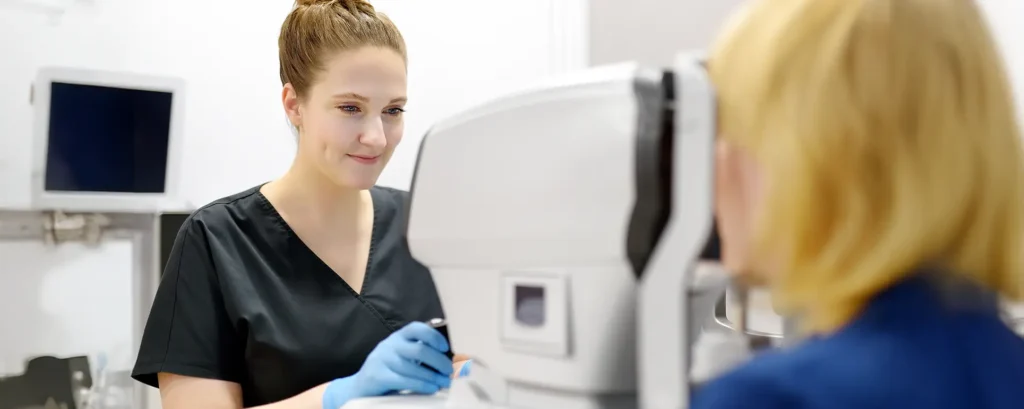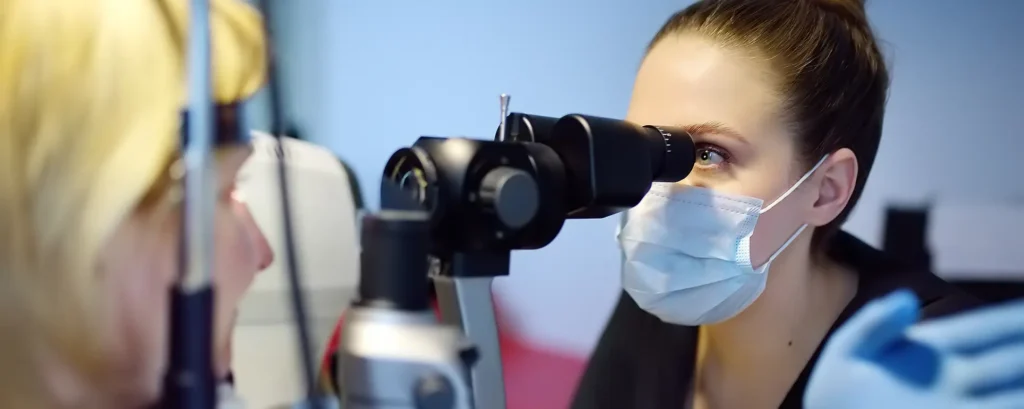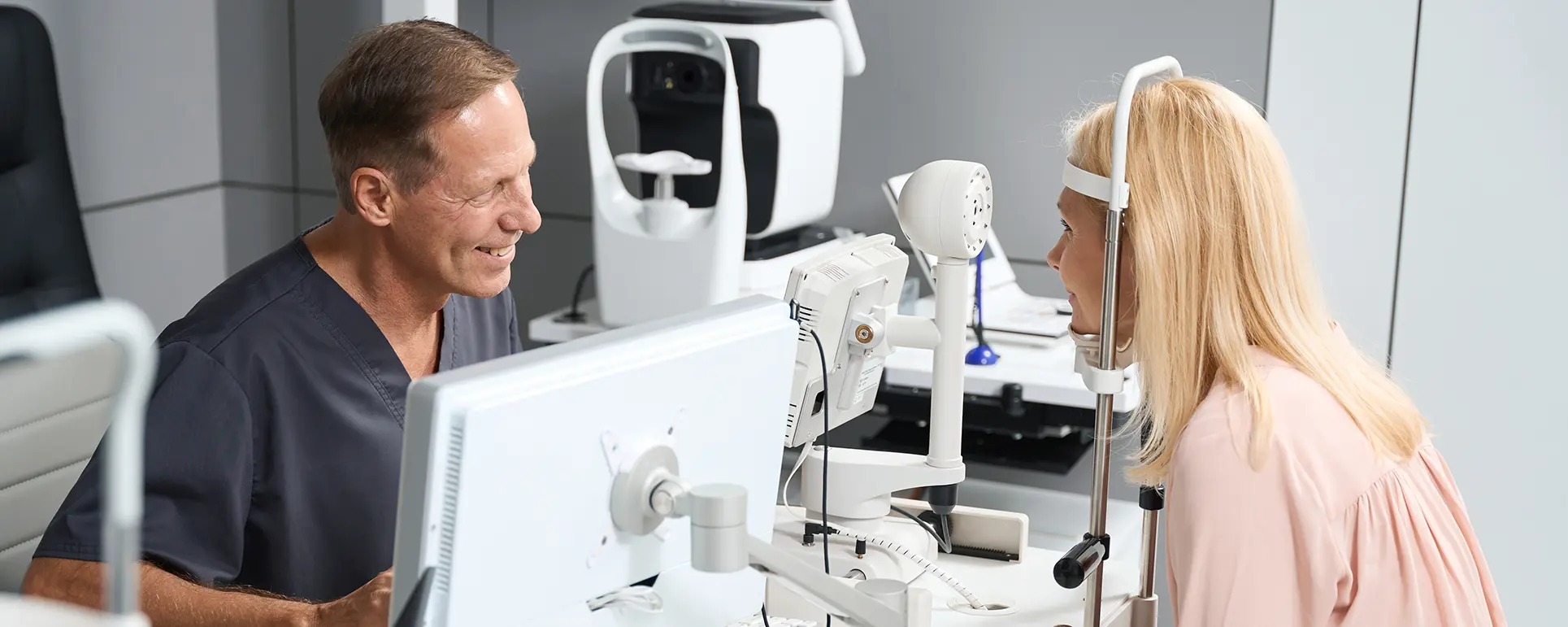Cataract surgery is one of the safest and most successful procedures performed anywhere in the world. For most people, it brings a huge improvement in vision and quality of life. But like any operation, it does carry some risks, and one of the most talked-about complications is a posterior capsule tear.
This is not something surgeons want to see, but when it does happen, it is usually well managed, and most patients still achieve excellent vision afterwards. In this guide, we’ll walk you through exactly what posterior capsule tears are, why they occur, how surgeons handle them during surgery, and what it means for your recovery and long-term eyesight. By the end, you’ll feel well informed, reassured, and clear on what to expect.
Understanding the Posterior Capsule
Inside your eye, the natural lens sits within a thin, transparent membrane called the capsule. Think of it as a delicate bag, holding the lens securely in place. During cataract surgery, the front of this capsule is deliberately opened so that the cloudy lens material can be removed. The posterior capsule—the back part of this bag—is normally left intact.
Why? Because it acts as a barrier between the front and back of the eye, and it also provides the perfect platform to hold the new artificial lens implant (IOL). Without this capsule, there’s nothing to stabilise the lens in its normal position. This is why surgeons are always careful to protect the posterior capsule throughout the operation.
But despite that care, the posterior capsule is very fragile—just a few microns thick. If it tears, the surgeon has to adapt quickly to keep the surgery safe and ensure you still get a good result.
Why Do Posterior Capsule Tears Happen?
There are several reasons why the posterior capsule can tear. The most common cause is simply its delicacy—sometimes it gives way during lens removal or cleaning, especially in dense or advanced cataracts. Other contributing factors include:
- Weak zonules: The tiny fibres that hold the capsule in place may be fragile in some patients, making the capsule more vulnerable.
- Previous eye surgery or trauma: These can alter the normal strength or structure of the capsule.
- Dense cataracts: Harder lenses require more energy to break up, increasing stress on the capsule.
- Patient factors: Unexpected movement, coughing, or squeezing the eyelids can create sudden pressure changes.
It’s worth remembering that even in expert hands, a posterior capsule tear can occur—it’s part of the risk profile of the procedure, not necessarily a reflection of surgical error.
How Common Is It?

Posterior capsule tears are one of the more frequent complications in cataract surgery, but they’re still relatively uncommon overall. Large studies suggest the rate is about 1–2% of cases. This number may rise in complex surgeries, such as when the cataract is very advanced, or in eyes with conditions like pseudoexfoliation.
For the vast majority of patients, surgery goes smoothly without a tear. But even if it does happen, experienced surgeons have strategies and equipment ready to handle it immediately.
What Happens When a Tear Occurs?
If a tear is spotted during surgery, the surgeon will respond straight away. The aim is to contain the tear, prevent any lens fragments falling into the back of the eye, and adjust the plan for lens implantation.
Often, the surgeon will use a vitrectomy machine to clear any vitreous gel that may have moved forward. This reduces the risk of further complications later. Depending on the size and location of the tear, the lens may still be placed securely. If not, alternative positions or lens types can be chosen.
From the patient’s perspective, you won’t feel anything different—you’ll just know afterwards that the surgery took a little longer and required a change in approach.
Intraocular Lens Options When the Capsule Tears
In a routine operation, the IOL sits neatly in the capsular bag. But if the posterior capsule tears, that bag may not be able to hold the lens. In these situations, your surgeon may:
- Place the IOL in the sulcus, which is a space just in front of the capsule.
- Use a scleral-fixated IOL, which is attached to the wall of the eye.
- Choose an anterior chamber IOL, which rests in front of the iris.
All of these methods are well established. Most patients with one of these lenses still enjoy excellent vision after healing. The key is the surgeon matching the right option to the situation.
Recovery After a Posterior Capsule Tear
If your surgery included a capsule tear, your recovery may feel a little slower or involve more appointments, but the overall process is very similar. In the first few days, you might notice more inflammation or slightly blurrier vision. Your surgeon will usually prescribe anti-inflammatory drops for longer and check your eye more frequently in the early period.
By four to six weeks, most people’s vision is settling nicely, and the eye is stable. Occasionally, if complications arise—like swelling at the back of the eye (cystoid macular oedema)—further treatment is needed. But most patients still achieve the clear vision they were hoping for.
Possible Long-Term Risks

While most patients recover well, a posterior capsule tear does slightly increase the risk of certain issues later on, including:
- Cystoid macular oedema (swelling at the centre of the retina).
- Retinal detachment, though this remains rare.
- Lens decentration or dislocation, if the IOL doesn’t remain stable.
The chances of these are still low, but they explain why surgeons follow you closely after such a complication. Prompt treatment of any problems usually leads to good outcomes.
What You Can Do to Help
You can’t prevent a capsule tear yourself—it’s entirely in the hands of the surgeon during the operation. But you can support the process by:
- Choosing an experienced cataract surgeon.
- Following all pre-operative instructions carefully.
- Staying as still as possible during surgery.
- Using your drops exactly as prescribed afterwards.
- Attending every follow-up appointment.
These steps give your eye the best chance to heal smoothly, whatever happens during surgery.
The Emotional Side
Hearing that something “went wrong” during surgery can be unsettling. Patients often worry that their vision will never recover, or that they’re now at serious risk of blindness. It’s important to stress that this is rarely the case.
Surgeons deal with capsule tears regularly in training and practice, and they know how to adapt. The vast majority of patients with a capsule tear still achieve excellent results. What matters most is good communication with your surgeon, so you understand exactly what happened and what the plan is moving forward.
FAQ: Posterior Capsule Tears
1. What exactly is a posterior capsule tear?
A posterior capsule tear is when the thin membrane at the back of the eye’s natural lens becomes damaged during cataract surgery. This capsule normally holds the new artificial lens implant in place, so when it tears, the surgeon needs to adjust the surgical plan. While it may sound serious, it is a well-recognised complication that surgeons are trained to handle, and most patients still achieve excellent results once the eye has healed.
2. How serious is it if one happens?
A capsule tear makes the procedure more complex, as the surgeon has to adapt their approach to avoid further issues. It can slightly increase the risk of other complications, but most of the time, it is managed successfully within the same operation. With careful surgical technique and attentive aftercare, the vast majority of patients still end up with very good vision, so while it adds challenge, it doesn’t usually stop the surgery being a success.
3. Will I know if it happened during my surgery?
You won’t be aware of a tear happening during the operation itself, as you don’t feel it and the surgeon works under a microscope. After surgery, your surgeon will explain if a capsule tear occurred, what steps were taken to correct it, and what this means for your recovery. Clear communication at this stage is important to reassure you and to help you understand any changes in your treatment plan.
4. Does it affect which lens implant I get?
Yes, it can. If the capsule is no longer able to support a lens implant in its normal position, your surgeon may place the lens in another part of the eye, such as the sulcus, or may use a different design of lens altogether. These options are well established, and with the right choice, your final vision can still be excellent. What matters most is that the lens is stable and positioned safely.
5. Will my recovery take longer?
Recovery may be slightly more involved than after routine cataract surgery. You might need more frequent follow-up visits in the early stages and be prescribed anti-inflammatory drops for a longer period. Vision may also take a little longer to settle. However, many people notice clear improvements within a few weeks, and by around six weeks, most patients are well on the way to their final visual outcome.
6. Can a posterior capsule tear affect my final vision?
Most patients with a capsule tear still achieve the same level of vision as those whose surgery went entirely smoothly. The key factors are how quickly the tear was recognised, how it was managed during surgery, and how carefully the eye is monitored afterwards. With good management, a tear does not have to limit your final vision, and many patients are surprised at how well they see despite the complication.
7. Am I more at risk of retinal detachment?
There is a slightly increased risk of retinal detachment if a capsule tear occurs, particularly if some of the gel inside the eye (the vitreous) moves forward. Even so, the overall likelihood remains low, and most patients never experience this problem. Regular post-operative monitoring is important, as it allows any warning signs to be picked up early and treated before they cause serious harm to your sight.
8. Could I need another operation later?
Most capsule tears are handled fully at the time of the original operation, and no further surgery is required. In some cases, if the lens implant becomes unstable or if vitreous was left in the wrong place, a second procedure may be needed to correct things. Fortunately, this is not common, and even if further surgery is required, it is usually successful in restoring stability and maintaining good vision.
9. Is there anything I can do to reduce risks after surgery?
Yes, your role in recovery is important. You should use your prescribed drops exactly as directed, avoid rubbing your eye, refrain from lifting heavy weights, and attend all follow-up appointments. These steps help your surgeon ensure the eye heals properly and that any problems are spotted quickly. Good aftercare can make a big difference to the final result, especially after a complication like a capsule tear.
10. Should I be worried if my surgeon mentions a posterior capsule tear?
It’s normal to feel anxious if you hear that something unexpected happened during your surgery, but a capsule tear is a known risk and something surgeons are prepared for. Most patients who experience one still recover well and enjoy excellent vision. The most important thing is to keep in close contact with your surgical team, ask questions if you are unsure, and follow their guidance carefully as you recover.
Final Thoughts
A posterior capsule tear is one of the better-known complications of cataract surgery, but it is also one that modern surgeons are highly skilled at managing. While the words “tear” and “complication” can sound alarming, the reality is that this situation is recognised quickly during surgery and handled using well-established techniques. For most patients, the outcome remains excellent, and the vision they achieve after recovery is just as good as if the surgery had gone completely to plan. The main difference is often that the recovery involves a little more monitoring and a slightly longer course of drops.
If you’re preparing for cataract surgery, it is natural to want reassurance about risks and outcomes. The key thing to remember is that complications like posterior capsule tears are relatively rare, and even when they do occur, they rarely prevent a good result. Open communication with your surgeon, carefully following aftercare instructions, and attending every follow-up appointment all play an important role in ensuring the best possible vision.
At London Cataract Centre, we specialise in advanced cataract surgery and have extensive experience in managing complex cases. Our team is here to answer your questions, explain every step of the process, and give you the confidence that you are in safe hands. If you would like to find out more about cataract surgery, or you are ready to take the next step towards clearer vision, we are here to guide you with the highest level of care and expertise.
References
- Segers, M.H.M., Behndig, A., van den Biggelaar, F.J.H.M. et al., 2022. Risk factors for posterior capsule rupture in cataract surgery as reflected in the European Registry of Quality Outcomes for Cataract and Refractive Surgery. Journal of Cataract & Refractive Surgery, 48(1), pp. 51–55. Available at: https://pubmed.ncbi.nlm.nih.gov/34074994/ [Accessed 8 September 2025].
- Narendran, N., Jaycock, P., Johnston, R.L., Taylor, H., Adams, M., Tole, D.M. and Sparrow, J.M., 2009. The Cataract National Dataset electronic multicentre audit of 55 567 operations: risk stratification for posterior capsule rupture and vitreous loss. Eye (London), 23, pp. 31–37. Available at: https://pubmed.ncbi.nlm.nih.gov/18327164/ [Accessed 8 September 2025].
- Mohebbi, M. et al., 2017. Outcome of single-piece intraocular lens sulcus implantation following posterior capsular rupture during phacoemulsification. Medical Journal, details. Available at: https://www.ncbi.nlm.nih.gov/pmc/articles/PMC5525496/ [Accessed 8 September 2025].
- Vajpayee, R.B., 2001. Management of posterior capsule tears. Survey of Ophthalmology, details. Available at: https://www.sciencedirect.com/science/article/abs/pii/S0039625701001953 [Accessed 8 September 2025].
- Segers, M.H.M. et al., 2022. Outcomes of cataract surgery complicated by posterior capsule rupture in the European Registry of Quality Outcomes for Cataract and Refractive Surgery. Journal of Cataract & Refractive Surgery, details. Available at: https://pubmed.ncbi.nlm.nih.gov/35179858/ [Accessed 8 September 2025].

